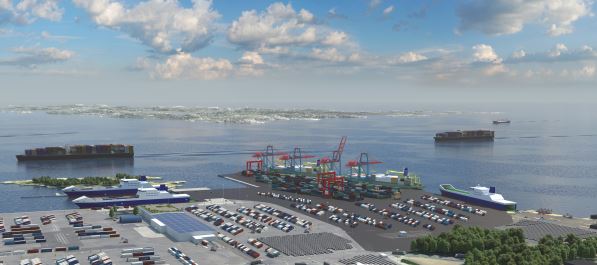On 29 June 2016 the Council’s Permanent Representatives Committee approved new rules to increase the financial transparency of ports and create fair conditions for access to port services across Europe. It confirmed the agreement reached with the European Parliament on 27 June.
The new rules set out to make ports more efficient and ensure fair competition in this crucial sector that accounts for up to 3 million jobs. They aim to boost the competitiveness of European ports both in promoting short sea shipping as an alternative to congested roads and vis-à-vis ports located in non-EU countries. More competitive facilities and processes should also reduce costs for transport users.
Until now, EU ports have only been regulated in horizontal legislation and Treaty provisions.
Which ports and services are covered by the reform?
The regulation will apply to over 300 seaports listed in the trans-European transport network guidelines (‘core network’ and ‘comprehensive network’). These ports play a significant role in exchanges between EU countries as well as in EU trade with the rest of the world. They are essential nodal points in EU intermodal transport chains and in connecting peripheral areas and islands. In total, 96% of all freight and 93% of all passengers through EU ports transit through these TEN-T ports. Member states are free to decide whether to apply the regulation to other ports as well.
In order to avoid disproportionate administrative burdens, member states may decide to leave out ports in the comprehensive network located in the outermost regions, such as Réunion, Madeira and the Canary Islands. They may also decide not to apply the rules on the separation of accounts to small ports in the comprehensive network, subject to certain conditions.
When it comes to the different categories of port services, cargo handling and passenger services will be subject to the financial transparency rules, but are exempted from the access provisions. Member states will remain free to decide how to organise these services, in compliance with Court of Justice case-law.
Member states may also decide to apply the access rules to pilotage services. In such cases they should inform the Commission. Dredging will only be covered by the rules requiring separate accounts for publicly funded activities.
Increased financial transparency
The reform makes port service charges and port infrastructure charges more transparent. It also increases transparency in the financial relationship between the state, ports and port service operators. For example, where a port management body receives public funding, it will have to keep separate accounts to show how those funds have been used.
The increased transparency will contribute to better use of public funds and to the effective and fair application of EU competition rules in ports.
Access to port services
The draft regulation aims to create a level playing field and reduce legal uncertainties by laying down a framework that sets clear conditions for access to port services in the EU.
In order to take into account the diversity of the port sector in Europe, as well as the particular circumstances of member states, member states and port management bodies will be able to impose certain minimum requirements for the provision of port services and restrict the number of service providers in a limited number of cases set out in the regulation. The minimum requirements may relate for instance to compliance with the social and labour law applicable in the member state of the port concerned. The possibilities for limiting the number of service providers include, for example, safety, security and environmental sustainability.
Also view related infographic to explore why we need port regulation




























































